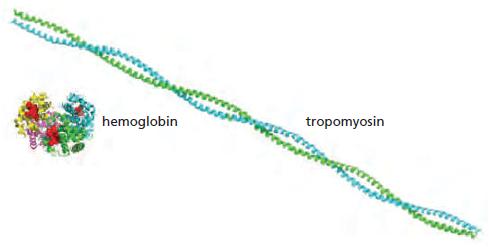Tropomyosin, at 93 kd, sediments at 2.6S, whereas the 65-kd protein, hemoglobin, sediments at 4.3S. (The sedimentation
Question:
Tropomyosin, at 93 kd, sediments at 2.6S, whereas the 65-kd protein, hemoglobin, sediments at 4.3S. (The sedimentation coefficient S is a linear measure of the rate of sedimentation.) These two proteins are drawn to scale in Figure Q8–1. How is it that the bigger protein sediments more slowly than the smaller one? Can you think of an analogy from everyday experience that might help you with this problem?
Figure Q8-1

Fantastic news! We've Found the answer you've been seeking!
Step by Step Answer:
Related Book For 

Molecular Biology Of The Cell
ISBN: 9780815344322
6th Edition
Authors: Bruce Alberts, Alexander D. Johnson, Julian Lewis, David Morgan, Martin Raff, Keith Roberts, Peter Walter
Question Posted:





